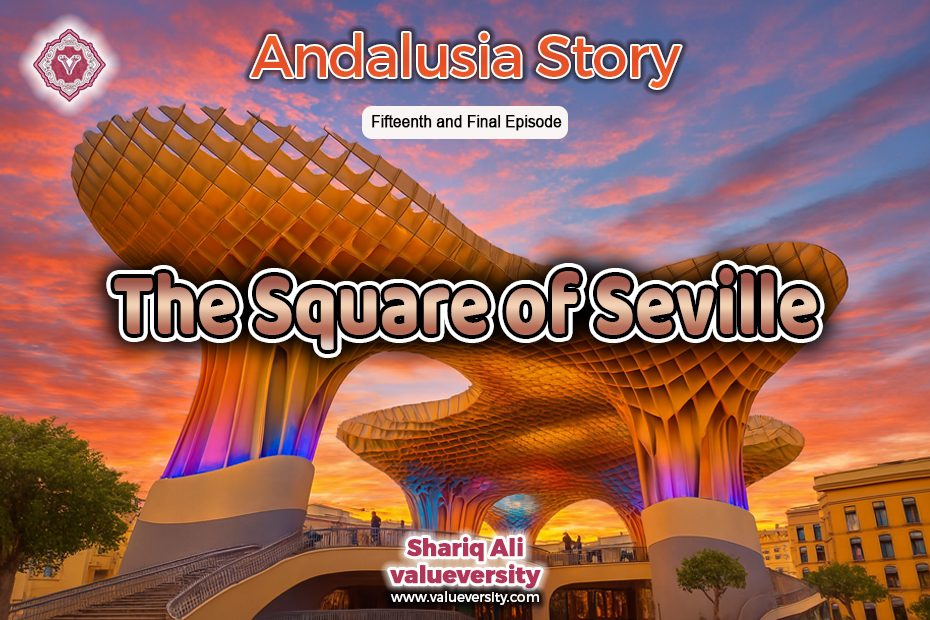The Square of Seville, Andalusian Tale – Fifteenth and Final Episode
Shariq Ali
Valueversity
I stand in the vast central square of Seville, which in the Muslim era of al-Andalus was called Ishbiliya. Above me, an extraordinary wooden structure spreads into the sky like the wings of a butterfly.
The first impression is as if a giant butterfly is casting its shadow over the square. This is the Metropol Parasol, lovingly called Las Setas—the Mushrooms. It is the largest wooden structure in the world, a masterpiece of German architect Jürgen Mayer, completed in 2011. By day, it reflects light to create a magical atmosphere, and by night, it presents a dreamlike spectacle with its changing colors.
I am standing on the second-level platform, from where the entire square is clearly visible. Below lies a market. In one shop, fragrant flowers and fresh fruits are on display. Nearby stands an archaeological museum, preserving relics from ancient Rome and Muslim al-Andalus. Above is a walkway, offering a panoramic view of all Seville. As I slowly walk along the platform, the people sitting on benches, children at play, lovers lost in each other, and café visitors—all become part of my memory like vivid, living pictures.
This square is a beautiful fusion of the old and the new. Above hovers a marvel of futuristic engineering, while all around are centuries-old streets and buildings, each whispering tales of history. Ancient churches and cathedrals with pointed towers still carry traces of the Roman era in their stones. Orange trees laden with fruit, the laughter of children in the air, and conversations of friends on benches—all together reflect a society that is modern yet deeply rooted in tradition.
This is Seville—the fourth-largest city of Spain, blessed with more sunshine than any other. Once, along the banks of the Guadalquivir River, it was a great trading hub, and during the golden age of al-Andalus it was known as Ishbiliya. At that time, it was a cradle of knowledge and art, a center of industry and commerce. Its gardens, palaces, and scholarly institutions were renowned throughout Europe. From here, Muslim ships once sailed to Africa and across Europe. Even today, the city carries that heritage within itself.
Standing under the mushroom-like shade of the Parasol, I think of how, centuries ago, this very land was home to Muslims, Jews, and Christians alike. Even today, the city breathes the fragrance of that harmony. The only difference is that the actors on the stage of time have changed, yet human emotions, dreams, and desires remain the same.
This is our last day in the land of al-Andalus.
Seville—or Ishbiliya—dancing on the rhythm of past and present, reminds us that civilizations never vanish; they live on in new forms. This is the central idea and the true story of the Andalusian Tale.
Time keeps changing, but human curiosity, the courage to dream, and the pursuit of beauty never end.
At the crossroads of Ishbiliya’s echoes of the past and Seville’s heartbeat of the present, the Andalusian Tale finds its conclusion.
—The End
